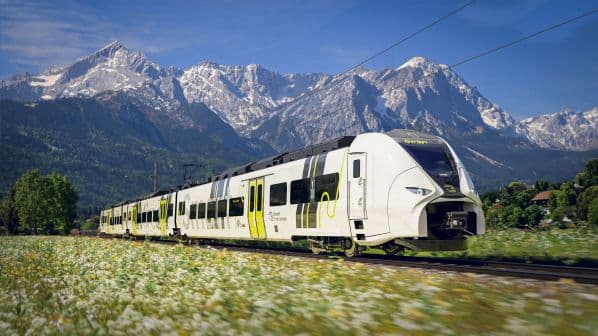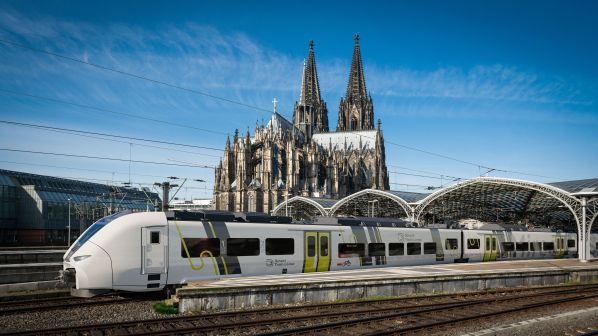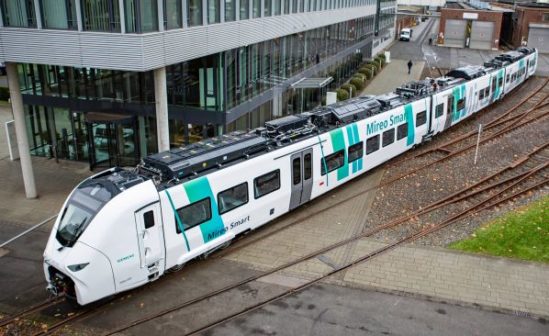EARLIER this month Siemens announced the arrival of Smart Train Lease (STL), a new company that will offer the standardised version, launched last October, of the company’s latest multiple-unit - the Mireo Smart - to operators on a short-term lease basis. Interestingly, the company is including alternative traction technology as an option.
Siemens uses the analogy of consumer car rental to describe how the concept works in principle and that’s certainly a useful way of understanding how the offer functions, though sadly operators won’t be able to hire a train just for the coming weekend, as we’ll explain.
STL is a response to rapid growth in demand for regional rail travel in Europe that was already growing strongly before the Covid-19 pandemic hit and has bounced back relatively quickly since then. Demand in Germany, in particular, has been boosted by the nationwide €49 monthly ticket offer, a product also now under consideration in other European countries, including France and Spain. The advanced liberalisation of regional passenger services has also prompted a steady increase in ridership.
As STL points out, until now, procuring new multiple-units has only been possible on either an outright purchase or long-term leasing basis, with relatively long lead times, neither of which have allowed operators to respond dynamically to increasing passenger numbers.
In order to better understand how STL will work in practice, IRJ sat down for an exclusive interview with the company’s CEO, Mr Benjamin Dobernecker, who, until recently, was leading Siemens’ operations in that bastion of equipment leasing, the United States. “Procuring a new train can be a lengthy process,” he says, “and we want to be able to allow the market to react faster as rail becomes increasingly more attractive.”
So, from October this year STL will make a fleet of Mireo Smart trains available in a new leasing pool that will eventually comprise 20 multiple-units. Of these, 12 will be standard three-car EMUs, while the remaining eight two-car units will feature alternative traction technologies: six hydrogen-powered and two battery-powered trains.
ETCS as standard
All units will be fitted with ETCS as standard, as well as the German PZB train protection system. As approval to operate these trains has so far only been obtained for Germany, the first leases will be for operation within that country only.
Dobernecker explains that the leases contain three maintenance options: base, extended and full. At the base level, an operator’s staff can be trained quickly to perform simple tasks, while the extended level is suitable for operators who already have skilled rolling stock maintenance teams. The full option has Siemens providing its own maintenance staff. All regular maintenance is expected to take place at operators’ own depots. As the trains will be brand new, heavy maintenance isn’t expected to be required, but trains can be return to Siemen’s central depot for the Mireo Smart fleet in Dortmund if necessary.
The need to train local maintenance staff means that - unlike with car leasing - lead times for operators will be months, rather than days. “Realistically it will be several months,” Dobernecker says. “And once operators have invested in their maintenance team, we think the minimum lease term is likely to be one year. At the other end of the scale, the maximum lease length is likely to be around the eight years mark, as we want to keep a young fleet of vehicles, to be able to always offer the most technologically advanced trainsets.”
Keeping a youthful fleet of trains begs the question of what will happen to trains once they are no longer required for leasing. In the car leasing world, the onward sale of used vehicles is a lucrative source of income. Dobernecker says STL is still evaluating what will happen to its Mireo Smart units, though he agrees that at least some are likely to be sold to the tertiary market.
But that is some time in the future. Right now, STL says it hasn’t signed any leasing contracts so far, although it reports that it is in discussions with all 27 German public transport agencies, as well as all major German regional operators. Five trains are expected to be initially available this October (watch out for an announcement at this year’s InnoTrans) and Dobernecker believes that there is substantial potential for the STL fleet to expand beyond 20 trains. “There are more than 6000 trains employed on regional train services in Germany,” he says. “If we were to look at providing just 1% of them, that would mean we would need 60.”
European growth opportunity
However, STL is setting its sights on an even bigger prize. “We see an opportunity to grow across Europe in the medium term, in the next five to 10 years,” Dobernecker says. For that to become a reality, Siemens will first need to obtain approval for the Mireo Smart in all 18 countries where it is expected to operate. It will then need to resolve how the trains will operate on lines that are not fitted with ETCS.
Although the new leasing structure in theory allows operators to “try before you buy” when it comes to alternative traction technology, STL does not provide the necessary supporting infrastructure, although it will recommend third-party suppliers. That means operators of battery trains will need access to ac OHLE to recharge, while those interested in testing hydrogen power will need organise their own fuel supplies and refuelling infrastructure.
STL is being rather coy around the financials of the new operation. It won’t say how much Siemens is investing in the venture, although the initial provision of 20 new Mireo Smart trains gives an indication. STL says pricing for potential operators hasn’t been finalised yet. And it hasn’t set a target for fleet utilisation. “In the locomotive market, utilisation currently ranges between 90% and 100%, so ultimately we would aim to achieve something similar,” Dobernecker says.
Standardised fleet
The extent to which European-wide short-term multiple-unit leasing is achievable in practice remains to be seen. The STL model is based on a standardised product that can be produced and operated at scale. As already noted, the continued existence of national legacy signalling systems, more prevalent on regional lines, is a potential hurdle. While ac electrification is the European standard for new routes, many lines across the continent are energised at 1.5 or 3kV dc. While dual and tri-voltage trains are of course possible, this adds substantially to both capital and operating costs, as well as making trains heavier.
A standardised fleet also requires a standardised loading and track gauge, so the STL model won’t be available in countries such as Britain, Ireland, Portugal or Spain.
Whether other train manufacturers will enter into the fray isn’t clear. IRJ has asked leading competitors Alstom and Stadler whether they are also considering setting up a short-term leasing operation.
For now, Siemens has first-mover advantage. Those with long memories, or who are keen students of modern European railway history, will recall that Siemens already has experience of rolling stock leasing. Just after the turn of the millennium it set up Dispolok to lease out what was then a nascent generation of electric locomotives, that grew into the ES64 EuroSprinter platform. The circumstances were different, and born of necessity, as Siemens had unexpectedly been left with surplus electric locomotives. The venture was sold on a few years later, but it undoubtedly gave Siemens useful first-hand experience of the leasing business.
STL insists that this new venture is more than a promotional exercise for the Mireo Smart platform. “We have a long-term commitment to the market,” Dobernecker says.
However long short-term leasing of multiple-units turns out to be and however widespread its geographic scope, it is a welcome development in the European rolling stock market and one that will also provide food for thought for international manufacturers based outside the region who may also be considering gaining a foothold on the continent.



